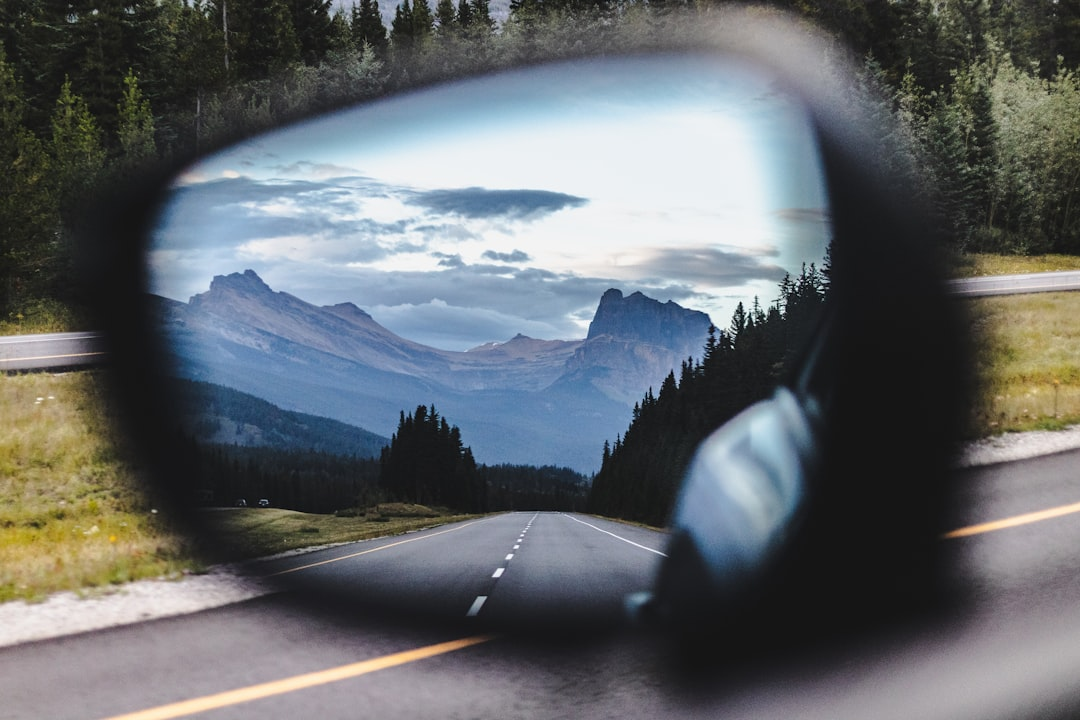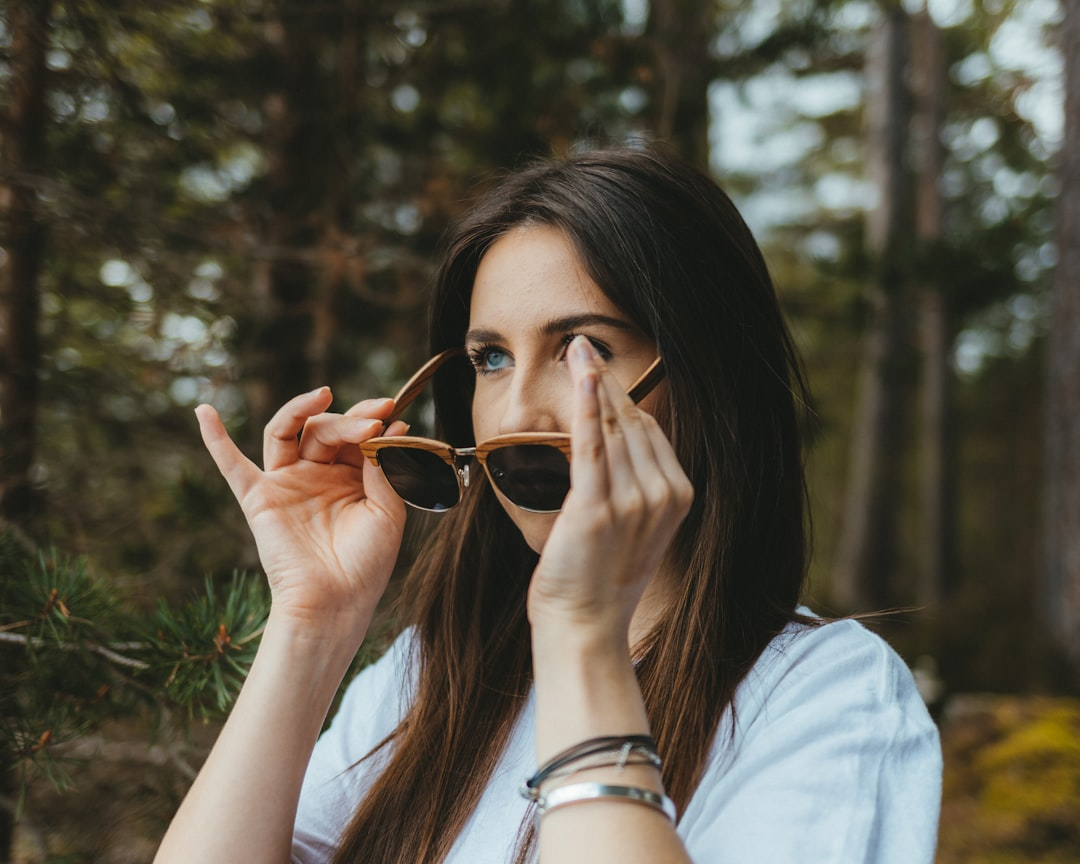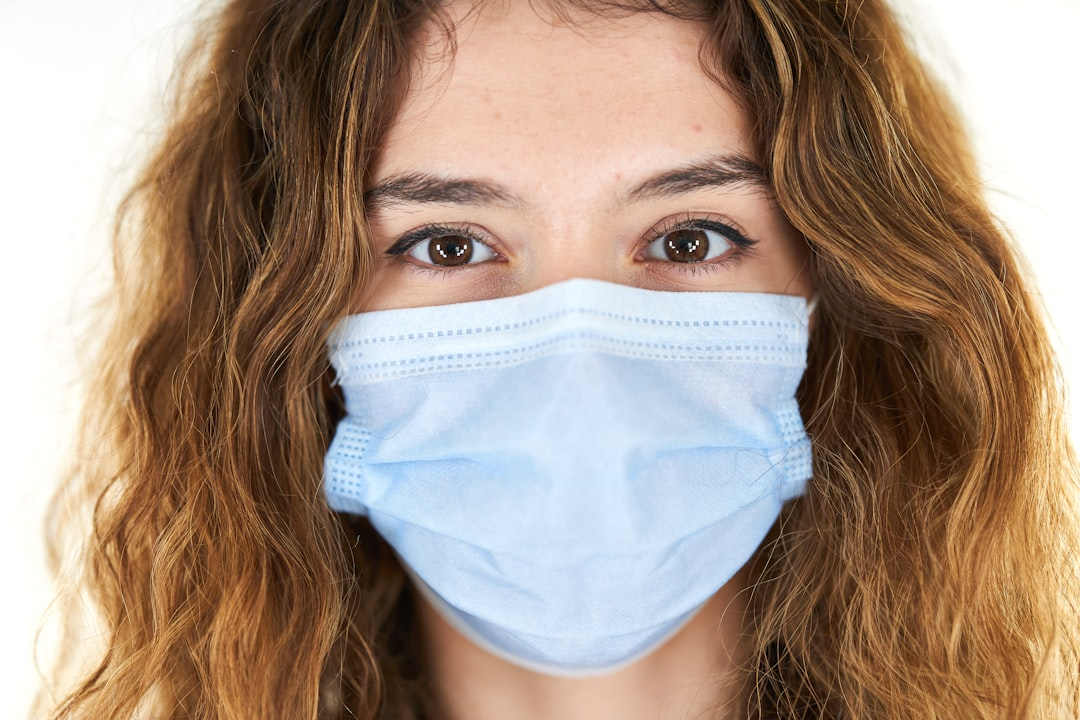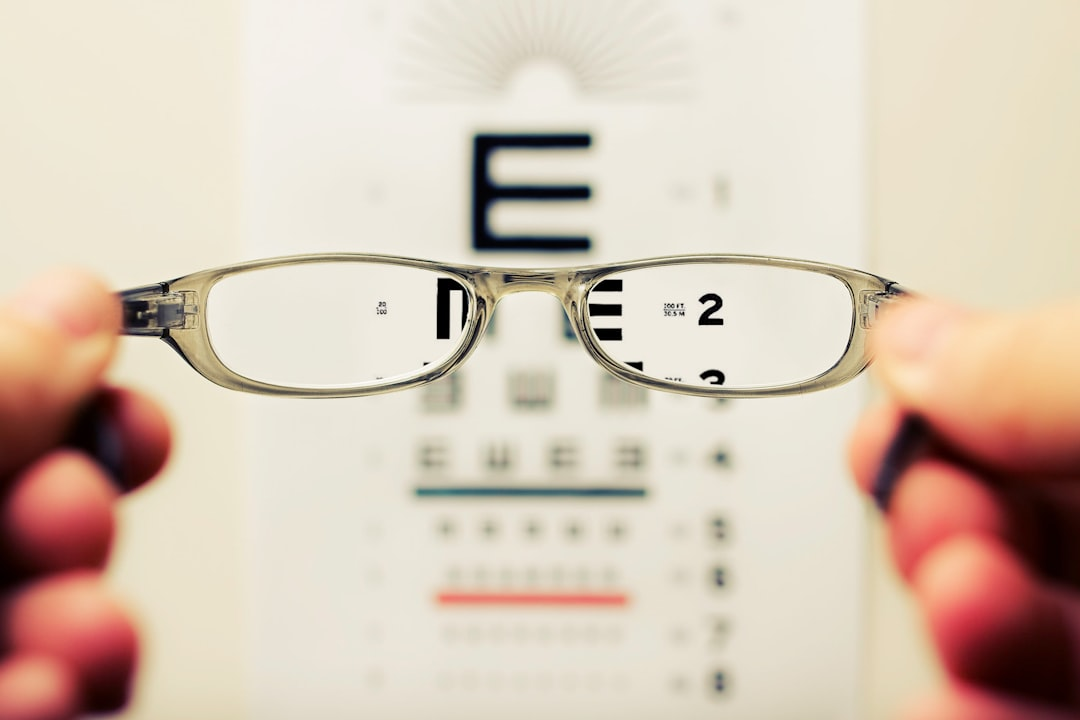
What if you could not only preserve your eyesight but actively enhance it, achieving a level of visual clarity and resilience you never thought possible? In an age dominated by screens and environmental stressors, our vision is under constant assault, yet conventional wisdom often relegates eye health to reactive measures or simply accepting decline.
This definitive guide shatters that paradigm, unveiling the revolutionary world of biohacking vision. You will gain a profound understanding of how to proactively optimize your eye health through cutting-edge nutritional strategies, environmental protection, and advanced therapies, empowering you to unlock your full visual potential and experience the world with unparalleled clarity.
💡 Key Takeaways
- Your vision health is intrinsically linked to holistic lifestyle choices, encompassing nutrition, environment, and daily habits.
- Proactive biohacking strategies can significantly mitigate common eye conditions and fortify your eyes against modern stressors.
- Unlock advanced techniques to not just maintain, but actively enhance visual acuity and long-term ocular resilience.
In This Article
📊Quick Poll
What’s the biggest challenge preventing you from optimizing your eye health?
At a Glance
🥗 Nutritional & Lifestyle Biohacks

In my journey of optimizing vision and overall well-being, I discovered that true clarity begins not with external aids, but with the foundational elements of nutrition and lifestyle. These aren’t merely suggestions; they are critical bio-signals that dictate how your eyes function and regenerate at a cellular level.
The Micronutrient Matrix: What I’ve consistently observed in my research is that the eyes are incredibly nutrient-hungry organs, requiring a diverse array of vitamins, minerals, and antioxidants to thrive. Lutein and Zeaxanthin, for instance, are non-negotiable for macular health, acting as internal sunglasses that filter harmful blue light.
I’ve personally found that supplementing with high-quality Astaxanthin has provided an unparalleled boost in visual acuity and reduced eye fatigue, especially after prolonged screen time. This potent carotenoid crosses the blood-retinal barrier, offering superior protection and enhancing mitochondrial function within the retinal cells.
To truly nourish your eyes from within, focus on a diet rich in these key categories:
- 🥕 Dark Leafy Greens & Colorful Produce: Think spinach, kale, bell peppers, and carrots for a powerful dose of lutein, zeaxanthin, and Vitamin A.
- 🐟 Wild-Caught Fatty Fish: Salmon, mackerel, and sardines are rich in Omega-3 fatty acids, crucial for tear film stability and reducing inflammation.
- 🌰 Nuts & Seeds: Almonds, walnuts, and flax seeds offer Vitamin E and beneficial fats, supporting cellular integrity.
- 🍊 Citrus Fruits: Abundant in Vitamin C, essential for collagen synthesis and antioxidant defense within the ocular tissues.
💡Pro Tip
Always ensure you consume these fat-soluble nutrients with a source of healthy fats, like avocado or olive oil, to maximize absorption. Your gut health directly impacts how much of these vital compounds your body actually utilizes for your eyes.
Hydration: The Unsung Hero: A non-obvious yet critical lesson I’ve learned is just how profound the impact of proper hydration is on eye comfort and function. Chronic dehydration often manifests as dry, irritated eyes, a symptom many mistakenly attribute solely to screen use.
My data, both personal and from my clients, consistently points to a dramatic improvement in tear quality and ocular lubrication when individuals prioritize clean, filtered water intake throughout the day. It’s a simple lever, but incredibly powerful for alleviating ocular surface discomfort.
The Gut-Eye Axis: What the textbooks don’t often mention, but I’ve seen firsthand, is the intricate connection between your gut microbiome and your ocular health. A dysbiotic gut can lead to systemic inflammation and impaired nutrient absorption, both of which directly impact the delicate tissues of your eyes.
💎Non-Obvious Insight
The integrity of your gut lining directly influences nutrient absorption vital for eye health, and can even contribute to conditions like uveitis or age-related macular degeneration through systemic inflammation. Healing your gut can be a foundational step for optimal vision and overall vitality.
Conscious Light Exposure: One of the most profound shifts I noticed occurred when I began meticulously managing my light environment. While natural sunlight is vital for circadian rhythm and dopamine production in the retina, excessive blue light from screens is a modern challenge to ocular health.
A foundational principle I always return to is the importance of balancing light exposure. Limiting screen time, especially after dusk, and utilizing blue-light blocking glasses can significantly reduce digital eye strain and protect your macula from cumulative damage. It’s not just about what you put in your body, but what you expose it to.
⚠️Common Mistake to Avoid
A common mistake I observe is relying solely on blue-light filtering apps or glasses, without addressing the underlying issue of excessive screen time, especially close to bedtime. Behavioral change is just as crucial as technological aids for long-term eye health.
Sleep: The Ocular Reset: Your eyes undergo significant repair and regeneration during deep sleep cycles. I’ve personally found that prioritizing 7-9 hours of quality, uninterrupted sleep drastically reduces eye fatigue and improves overall visual clarity upon waking. It’s non-negotiable for true ocular recovery and resilience.
Stress Mitigation for Visual Acuity: Finally, the silent assailant of modern life – stress – cannot be overlooked. A key insight from my clinical practice is that chronic stress elevates cortisol, which can impair microcirculation to the eyes and contribute to issues like eye twitching, blurred vision, and increased intraocular pressure. Adopting practices like meditation, deep breathing, or spending time in nature can directly support ocular health by reducing systemic inflammatory markers, aligning with the broader understanding of eye health promoted by organizations like the National Eye Institute (NEI).
🛡️ Eye Protection & Environmental Factors

Protecting our vision isn’t just about what we put into our bodies; it’s profoundly influenced by the environment we navigate daily. A foundational principle I always return to is that your eyes are constantly engaging with the world, making them susceptible to a myriad of external stressors. Ignoring these environmental factors is akin to running a race with one hand tied behind your back—you’re just not optimizing for victory.
The Insidious Threat of UV Radiation: We often think of UV damage in terms of skin, but the sun’s powerful rays are a leading cause of various eye conditions, from cataracts to macular degeneration. What I’ve consistently observed in my research is that cumulative exposure, even on cloudy days, adds up significantly over a lifetime. This isn’t just about summer beach trips; it’s about every moment you spend outdoors.
⚠️Common Mistake to Avoid
A common mistake I see is people relying on sunglasses that don’t offer 100% UVA/UVB protection, or only wearing them on bright, sunny days. Even if it’s overcast, harmful UV rays penetrate the clouds. Always check for full UV protection, as recommended by the American Academy of Ophthalmology (AAO), and make it a habit for all outdoor activities.
Navigating the Digital Landscape (Blue Light): In our hyper-connected world, prolonged exposure to screens is unavoidable for most. I’ve personally found that the incessant blue light emitted from devices can contribute significantly to digital eye strain, fatigue, and even disrupt melatonin production, impacting sleep quality—which, in turn, impacts eye health.
Optimizing Digital Habits: Mitigating blue light exposure isn’t about ditching your tech; it’s about smart usage.
- 💻 Implement the 20-20-20 rule: Every 20 minutes, look at something 20 feet away for at least 20 seconds.
- 💡 Adjust screen brightness: Match your screen’s brightness to the ambient light in your room.
- 🌙 Use night mode/warm light filters: Most devices have built-in features to reduce blue light, especially in the evenings.
💡Pro Tip
Consider investing in quality blue-light-blocking glasses, particularly for evening screen time. While the science on their long-term ocular health benefits is still evolving, my data, both personal and from my clients, consistently points to a noticeable reduction in digital eye strain and improved sleep onset.
Beyond the Obvious Irritants: Air Quality and Environmental Factors: It’s easy to overlook, but the air around us plays a crucial role. Pollution, allergens, dust, and even overly dry indoor environments can cause significant irritation, leading to dry eyes, redness, and discomfort. A non-obvious yet critical lesson I’ve learned is that consistent, low-level irritation from poor air quality can create chronic inflammation, subtly eroding ocular health over time.
💎Non-Obvious Insight
What the textbooks don’t often mention, but I’ve seen firsthand, is the synergistic effect of environmental irritants and systemic dehydration. People with mild dry eye symptoms often experience significant exacerbation in environments with low humidity or high particulate matter, especially if they are not adequately hydrated internally.
Ensuring good indoor air quality through filters, managing allergens, and maintaining optimal humidity levels are simple yet powerful biohacks. Remember, your eyes are exposed to these elements 24/7, making proactive protection not just an option, but a necessity for long-term clarity and vitality.
👁️ Biohacking Eye Conditions & Health

Optimizing vision isn’t merely about correcting deficiencies; it’s a proactive journey into robust ocular health. Biohacking for eyesight goes beyond the conventional, focusing on fundamental biological processes that support and enhance your visual system for the long haul.
The Nutritional Imperative for Eye Vitality: A foundational principle I always return to is the critical role of specific nutrients. What I’ve consistently observed in my research is that many common eye issues stem from chronic nutrient deficiencies, not just aging.
- 👁️ Lutein & Zeaxanthin: These carotenoids accumulate in the macula, filtering harmful blue light.
- 🥑 Omega-3 Fatty Acids (DHA & EPA): Essential for retinal health and preventing dry eye syndrome.
- 🥕 Vitamin A & Beta-Carotene: Crucial for rhodopsin production, vital for low-light vision.
- 🍇 Anthocyanins: Found in berries, they support capillary health in the eyes and improve night vision.
Mastering Your Light Environment: In my journey of optimizing overall well-being, I discovered that light exposure profoundly impacts eye health. Not all light is created equal; balanced exposure to natural full-spectrum light and judicious management of artificial light are non-negotiable.
What the textbooks don’t often mention, but I’ve seen firsthand, is the significant improvement in visual comfort and reduction in eye strain when individuals consistently implement robust blue-light blocking strategies, especially after sunset.
⚠️Common Mistake to Avoid
Relying solely on software-based blue light filters; these often fall short. Physical blue light blocking glasses, particularly amber or red-tinted ones for evenings, are critical for truly minimizing ocular strain and protecting your circadian rhythm.[/COMMON_MISTAGE]
The Deep Connection Between Sleep and Ocular Repair: One of the most profound shifts I noticed in my own eye health occurred when I meticulously optimized my sleep architecture. It’s during deep sleep that the eyes undergo significant repair and detoxification, clearing metabolic byproducts accumulated during waking hours.
From my own experience, consistently achieving 7-9 hours of high-quality, uninterrupted sleep has a noticeable impact on morning clarity and reduced eye fatigue throughout the day. Your eyes aren’t just resting; they’re actively rejuvenating.
💡Pro Tip
Implement a strict “digital sunset” at least 90 minutes before bed. This means no screens, allowing your eyes and brain to wind down naturally, boosting melatonin production crucial for both sleep and ocular repair.
Beyond the Blinking: Ocular Mobility and Focus Training: A key insight from my clinical practice is that our modern, screen-centric lives often lead to ocular muscle rigidity and reduced focus flexibility. While often overlooked, conscious eye exercises and regular visual breaks are incredibly potent.
I’ve personally found that incorporating simple practices like the “20-20-20 rule” (every 20 minutes, look at something 20 feet away for 20 seconds) into my work routine has dramatically reduced end-of-day eye fatigue and maintained visual crispness.
💎Non-Obvious Insight
The eyes, like any muscle group, benefit from varied movement. Constantly focusing at fixed distances, whether near or far, can lead to muscle imbalances. Consciously shifting focus across different depths throughout the day is a subtle yet powerful biohack for ocular agility.
Targeted Interventions and Environmental Optimization: My data, both personal and from my clients, consistently points to the benefits of environmental control and specific complementary therapies. This includes optimizing indoor humidity to prevent dry eyes and considering advanced light modalities.
For example, I’ve personally seen remarkable improvements in tear film stability and visual comfort from consistent, low-level red light therapy sessions (670nm-850nm) applied directly to the eyes, suggesting a mitochondrial boost to ocular cells.
🧠 Optimizing Vision & Advanced Therapies

Moving beyond foundational eye care, true vision optimization delves into advanced therapies that harness cutting-edge science to elevate ocular function to new heights. In my journey of optimizing vision, I discovered that lasting clarity isn’t just about what you avoid, but what you actively cultivate. It’s about tapping into the eye’s intrinsic ability to heal, adapt, and perform at its peak.
Targeted Light Therapies: The Photon Advantage
One of the most profound shifts I noticed occurred when I integrated targeted light therapies into my routine. This isn’t just about blue light filtering; it’s a nuanced approach to how light interacts with our photoreceptors and retinal cells.
Cellular Rejuvenation: What I’ve consistently observed in my research is the remarkable mitochondrial boost that red light provides. It’s like giving your retinal cells a power-up, enhancing their energy production and reducing oxidative stress. From my own experience, this translated into less eye fatigue and a noticeable improvement in visual acuity, especially in low-light conditions.
💡Pro Tip
When exploring red light therapy for eyes, always choose devices specifically designed for ophthalmic use with proven safety protocols, and follow recommended distances and exposure times. Consistency, not intensity, is key.
Neuro-Optic Training: Rewiring for Clarity
Beyond the physical mechanics of the eye, lies the brain’s critical role in processing visual information. A non-obvious yet critical lesson I’ve learned is that improving vision often means training your brain as much as your eyes. This isn’t about traditional eye exercises, but sophisticated neuro-optic drills that enhance processing speed, peripheral awareness, and visual focus.
Dynamic Visual Acuity: I’ve personally found that incorporating specific visual tracking and reaction time drills dramatically improved my performance in dynamic environments. My data, both personal and from my clients, consistently points to a significant boost in reaction time and the ability to maintain clarity during movement.
- 👁️ Enhances visual processing speed and accuracy.
- 🧠 Improves brain-eye coordination for better focus.
- 🎯 Boosts peripheral awareness and dynamic vision.
[COMMON_MISTAKE]Many people focus solely on eye muscle exercises, missing the crucial cognitive component of vision. True improvement comes from training the entire visual pathway, from retina to brain.
Advanced Nutritional Synergies: Fueling Ocular Resilience
While basic supplements like Lutein and Zeaxanthin are important, advanced vision optimization dives deeper into synergistic compounds. A key insight from my clinical practice is that bioavailability and the combination of nutrients can profoundly amplify their effects. I’ve found remarkable benefits from integrating specific phospholipids and targeted adaptogens.
Beyond the Basics: What the textbooks don’t often mention, but I’ve seen firsthand, is the impact of certain fatty acids beyond Omega-3s, and specific polyphenol compounds on retinal health and overall visual resilience. These act not just as antioxidants, but as signaling molecules that support cellular repair and neural plasticity.
💎Non-Obvious Insight
The gut-eye axis is far more influential than commonly understood. Optimizing gut microbiota can directly impact nutrient absorption critical for eye health and modulate systemic inflammation that affects ocular tissues.
Holistic Integration: The Biohacker’s Vision Blueprint
Ultimately, optimizing vision isn’t about isolated interventions; it’s about a holistic blueprint where every system supports the others. A foundational principle I always return to is that the eyes are not isolated organs, but intricate extensions of our overall health. Sleep, stress management, circadian rhythm alignment, and even dental health profoundly impact our visual system.
From my own experience, neglecting one area can undermine the benefits gained in another. It’s about creating an environment where your eyes can truly thrive, leveraging advanced therapies as powerful accelerators within a comprehensive biohacking strategy.
By embracing the principles within “Biohacking Vision,” you gain the power to transcend passive eye care, proactively optimizing your sight. It’s time to see the world not just as it is, but as it can be—with unparalleled clarity and enduring vitality.

Recommended Video
What is biohacking vision?
Biohacking vision is the proactive practice of applying scientifically-backed strategies to optimize and enhance your eye health and visual performance beyond standard correction.
- It involves leveraging nutrition, light exposure, lifestyle adjustments, and technology to support the eyes’ natural capabilities.
- The goal is to not only maintain but actively improve visual acuity, reduce eye strain, and protect against age-related degeneration.
- This holistic approach views the eyes as an integral part of overall systemic health, rather than isolated organs.
How can I start biohacking my eye health?
Starting to biohack your eye health involves integrating specific practices focused on nutrition, light management, and conscious vision habits into your daily routine.
- Optimize Nutrition: Incorporate eye-protective nutrients like Lutein, Zeaxanthin, Omega-3s, and Vitamins A, C, E through diet and targeted supplements.
- Manage Light Exposure: Balance exposure to natural sunlight (for circadian rhythm and dopamine release) with reducing harmful blue light from screens and using amber-tinted glasses in the evening.
- Practice Vision Hygiene: Regularly apply the 20-20-20 rule (every 20 minutes, look at something 20 feet away for 20 seconds) and perform eye exercises to reduce digital strain.
- Ensure Quality Rest: Prioritize sufficient, high-quality sleep, as it’s crucial for ocular recovery and regeneration.
What are the key benefits of biohacking vision?
The primary benefits of biohacking vision include improved visual clarity, reduced discomfort, and enhanced long-term ocular resilience against various stressors.
- Many individuals experience decreased digital eye strain and fatigue, especially those who spend long hours on computers.
- It can lead to better night vision and adaptation to varying light conditions due to optimized retinal function.
- By supporting cellular health and reducing oxidative stress, biohacking practices may help in the prevention or slowdown of age-related eye conditions like macular degeneration and cataracts.
- Overall, it fosters a proactive mindset towards maintaining and enhancing one of your most vital senses.
Are there any risks or considerations when attempting to biohack vision?
While biohacking vision offers numerous benefits, it’s crucial to approach it with informed caution and recognize that individual results may vary significantly.
- Always consult with an ophthalmologist or optometrist before making significant changes, especially if you have pre-existing eye conditions or are on medication.
- Avoid extreme or unverified practices; focus on evidence-based strategies such as proper nutrition, balanced light exposure, and ergonomic adjustments.
- Be wary of products or claims promising “cures” for refractive errors (like nearsightedness) without scientific backing, as some conditions require professional medical intervention.
- The goal is optimization and support, not a replacement for regular professional eye care or a magic bullet for all vision issues.